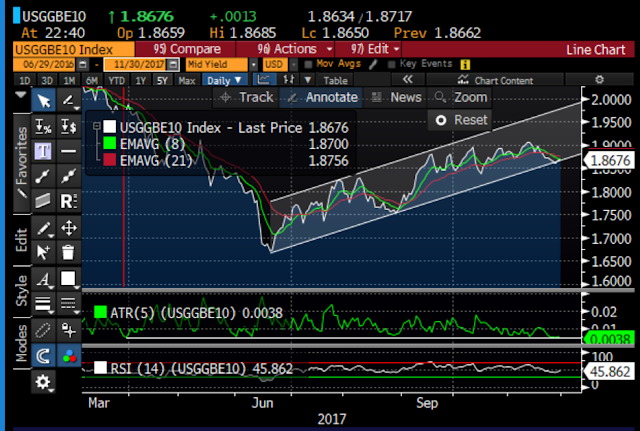PCE came in today slightly stronger at 1.4% vs 1.3% consensus but remains at pretty low levels.
To understand the difference between CPI and PCE and which measure to use please see the document below
The fed also published an interesting post with some good insights analyzing procyclical and acyclical components of the PCE goods and services deflator
All eyes remain on hourly earnings, health care costs post Obamacare and impact from new tax cuts...growth is back both in developed and EM regions and oil momentum remains strong, all helpful forces for higher inflation into 2018 besides negative impact on housing from higher yields.
That said yields might not rise as much as people think in 2018 despite a 400bn fed retreat. Demand from other players should be healthy with FX reserves building up so expect buying from EM central banks; pensions should also be regular buyers if yields inch higher to keep funding ratios in check around 70/75%, SWF especially middle east should also be buyers as oil grinds higher. Commercial banks after being sellers over the last 5yr should build up their HQLA and finally retail baby boomers should continue to be net buyers (global retail demand for global bonds is reaching 900bn in 2017).
Risky assets will be supported by healthy growth but we should nonetheless see an increase in volatility, positioning measures are at extremes in most asset classes, equity markets are stretched on many levels, inflation is slowly picking up...treasuries' curve inversion might again be a good timing indicator.
Break-evens December trend should be higher
Break-evens December trend should be higher
Differences CPI, PCE by Hicham Hajhamou on Scribd
